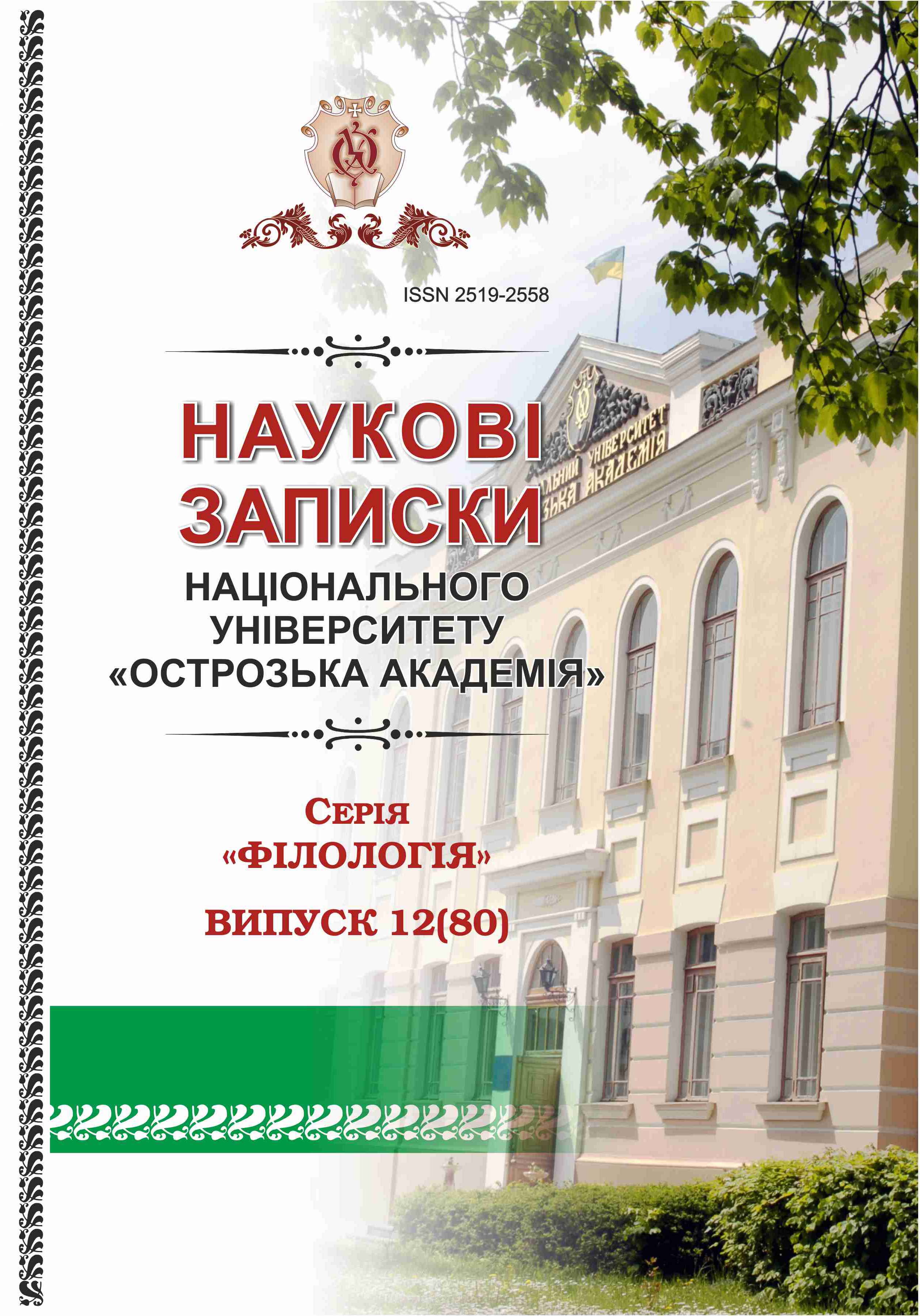THE TROPES OF THE AXIS OF PSEUDO-IDENTITIES IN I. KALYNETS’ POETRY IN THE ASPECT OF OBJECTIVATION OF THE RITUAL-MYTHOLOGICAL ETHNOCULTURAL CODE
Keywords:
tropes, axis of pseudo-identity, ethnocultural code, poetic text, image, I. KalynetsAbstract
The article deals with the study of artistic texts of the poet of the sixties I. Kalynets. In particular, it is concentrated on the study of the models of linguistic objectification of the ritual and mythological ethnocultural code in the poems of the collections «Awakened Muse» and «Slave Muse» have been studied.
The formalization of mythological images of pagan gods, demonological beings, characters of calendar holidays and seasonal rites, Christianized mythological figures in subjective and object positions has been described, their ethnosemantics has been established. The trope potential of nominations to denote a song as a symbolic rite in the Ukrainian culture has been clarified.
The analysis has shown that in the tropes of the axis of pseudo-identity, which were based on the mythological ethnocode, background knowledge of mythological characters was often the basis for their understanding. It has been found that the meanings included in the intentionality of mythological images were often not expressed explicitly and could not be taken out of context. Thus the mythological ethnocode was implied or presented at the level of a motive. For the most part, the images through which the religious-mythological ethnocode is objectified are monosemantic.
In the structure of metaphors, metaphorical epithets, comparisons, etc., mythological images have a clear emotional and expressive color and reflect the peculiarities of the worldview of the ethnos.

